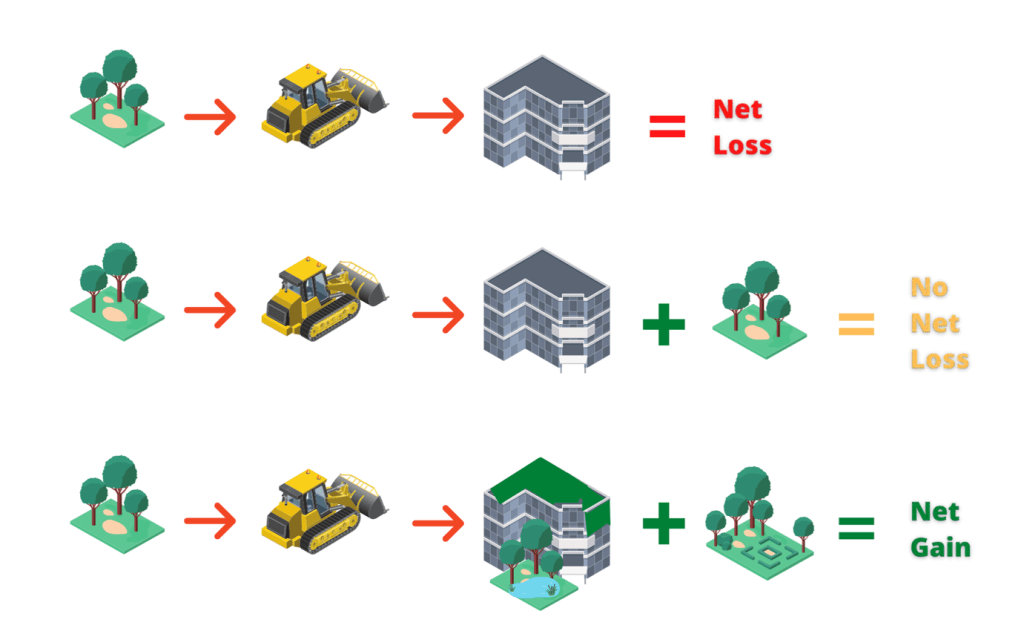
The term Biodiversity Net Gain (BNG) has received much exposure over recent months ever since it was included under the Government’s flagship Environment Bill, but what exactly is BNG and why is it so important?
What is Biodiversity Net Gain?
Biodiversity Net Gain (BNG) is an approach to development, land and marine management that leaves biodiversity in a measurably better state than before the development took place.
Currently, although certain sites are protected, there are limited mechanisms to value, maintain, enhance or create wider habitats. As a result, habitats continue to be lost to development, reducing nature’s ability to connect and thrive. As outlined within the Environment Act, new developments will need to deliver a minimum 10% BNG.
BNG is additional to existing habitat and species protections. Intended to reinforce the mitigation hierarchy, BNG aims to create new habitat as well as enhance existing habitats, ensuring the ecological connectivity they provide for wildlife is retained and improved.
What Does Biodiversity Net Gain look like?

Why is Biodiversity Important?
Nature
The primary reason behind new BNG legislation is that it contributes towards nature recovery by enhancing existing or creating new habitats in which species can thrive and in doing so can help wildlife adapt to climate change.
People & Places
Research has proven that green space can improve our health and well-being. BNG will help create new or enhanced existing greenspaces, bringing nature to our doorsteps.
BNG can finance investment in new or existing green infrastructure and nature-based solutions, enhancing the resilience of our towns, cities, coasts and infrastructure. It enables us to better adapt to climate change whilst contributing towards corporate and government Net Zero targets.
Economy
BNG can help to create greener neighbourhoods that are more attractive places to live, work and do business for current and future occupiers.
For landowners BNG can create long-term income opportunities through investment in habitat management. BNG generates sustainable and long- term financing for habitat management and maintenance, providing certainty and creating jobs.
Climate Change
BNG can help mitigate climate change through the restoration and protection of nature. For example, additional woodland creation will help take more carbon dioxide out of the atmosphere.
BNG can help communities adapt to climate change by increasing resilience to extremes of weather, including heatwaves and flooding. For example, green and blue spaces, such as woodlands, parks and rivers, can provide localised shading and cooling effects, whilst green roofs, street trees and other vegetated surfaces can help reduce flood risk in urban areas.
How Can EMEC Help?
- EMEC can conduct a BNG Assessment and advise developers how best to achieve their BNG target.
- EMEC can discuss options for increasing post-development biodiversity units through local off-site habitat creation.
- EMEC can give strategic ecological advice on the best places to locate BNG in order to contribute to the enhancement and creation of Nature Recovery Networks
- EMEC’s land management team can enhance existing habitats and create new habitats with high biodiversity value.
- EMEC can prepare long-term ecological management and monitoring plans for a site. EMEC’s land management team can deliver on those plans in the long-term and satisfy all long-term management and reporting requirements.
- EMEC can project manage the entire BNG process through its whole service provision.
If you would like more information on Biodiversity Net Gain, or have a future development project in which you need our advice, please get in touch with us.